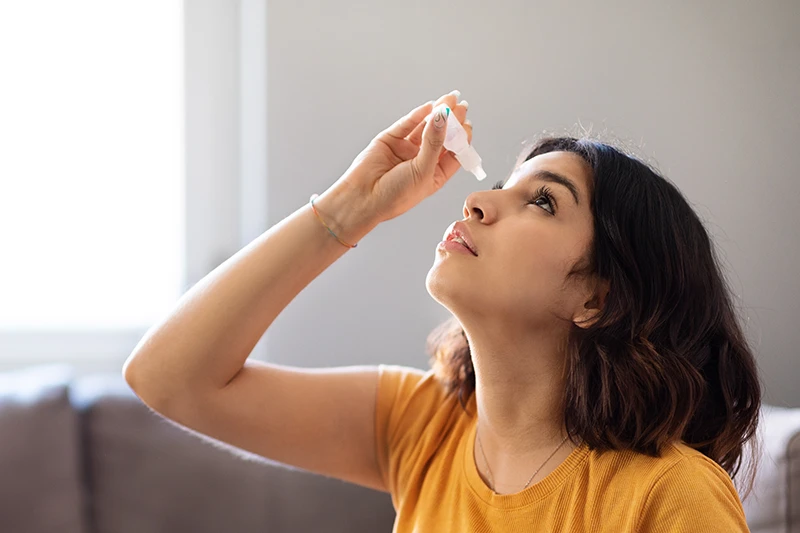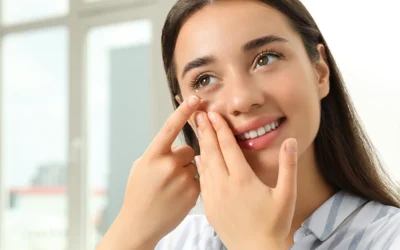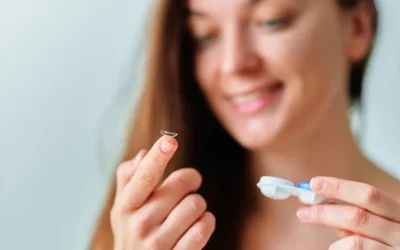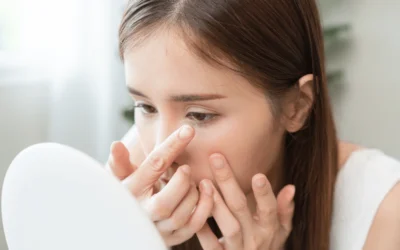If your eyes feel scratchy or burn after long hours on screens, you may be experiencing dry eye. Approximately 20 million people in the United States—and 344 million worldwide—are affected by dry eye disease (DED), and that number continues to grow among both young and older adults.¹
Dry eye is common among those who wear contact lenses, spend long hours at computers, or have certain medical conditions. Many people notice these symptoms and attribute them to allergies or other temporary factors.
At The Eye Center, our team offers personalized dry eye treatment in Pembroke Pines to help your eyes feel comfortable and keep your vision healthy. In this blog, we’ll share tips for relieving mild dryness, choosing the right eye drops, and when to seek professional care for ongoing symptoms.
Finding the right dry eye drops
Not all dry eye drops serve the same purpose. Some provide quick, general relief, while others target specific causes of dry eyes, such as inflammation or increased tear evaporation. They also differ in thickness and preservative options.
The right choice depends on your symptoms, how often you use the drops, and whether your eyes are sensitive to preservatives. Common options include:
- Artificial tears: Over-the-counter dry eye drops that temporarily replace moisture and relieve mild dryness. Preservative-free versions are gentle and suitable for frequent use.
- Lubricating gels and ointments: Thicker formulas that work well at night, keeping your eyes hydrated while you sleep.
- Prescription dry eye drops: Reduce inflammation and boost tear production for moderate to severe dry eye.
- Eye drops for contact lenses: Formulated to maintain comfort and prevent lenses from drying out during the day.
During a comprehensive eye exam, our experienced eye doctors in Pembroke Pines can help determine which drops—or combination of strategies—will work best for you.
Features to consider in artificial tears
For mild dry eye, artificial tears may be enough to keep your eyes comfortable throughout the day. They temporarily restore moisture, soothe irritation, and reduce burning or scratchiness.
When choosing artificial tears, look for:
- Preservative-free formulas: Safe for sensitive eyes and frequent use
- Added electrolytes or lipids: Support your natural tear film and help prevent moisture from evaporating too quickly
- Thicker or gel formulas: Offer longer-lasting relief, ideal for nighttime use
- Contact lens safety: Ensure the drops are compatible with your lenses
Professional care for chronic dry eye
Sometimes, over-the-counter eye drops aren’t enough, especially if the underlying cause requires specific treatment (e.g., blepharitis or meibomian gland dysfunction). Indoor heating, air conditioning, and long hours at screens can also worsen dryness, making professional care necessary.
Our eye doctors may recommend:
- Punctal plugs to help your eyes retain natural moisture
- Prescription medications or eye drops to reduce inflammation and support tear production
- Lifestyle adjustments, like staying hydrated, taking screen breaks, or using a humidifier
- OptiLight IPL therapy to address the root causes of chronic dry eye
If you wear contact lenses, a contact lens exam ensures your lenses fit comfortably and are the best option for your eyes. Scleral lenses can also provide all-day comfort and help maintain moisture for sensitive eyes.
See clearly and feel your best
Dryness and irritation don’t have to disrupt your day. With the right combination of eye care, lens management, and professional support, your eyes can feel refreshed and comfortable.
Schedule your appointment online or call us to learn how you can finally get lasting dry eye relief.
References:





